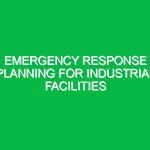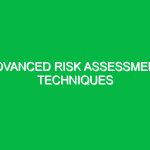In the complex and challenging world of oil and gas extraction, safety is paramount. The industry operates in dynamic environments where the stakes are high, and the risks can be significant. Safety protocols for oil and gas extraction are essential frameworks designed to protect workers, the environment, and the communities surrounding extraction sites. These protocols not only serve as guidelines for operations but also embody a commitment to Health, Safety, and Environment (HSE) practices that prioritize human and ecological well-being.
Understanding Safety Protocols for Oil and Gas Extraction
Safety protocols encompass a wide range of measures aimed at preventing accidents and minimizing risks associated with oil and gas extraction. These measures include stringent guidelines, training programs, emergency response plans, and regular safety audits. Their relevance in the HSE domain cannot be overstated; they help cultivate a culture of safety that reduces hazards and promotes sustainable practices.
For instance, consider the Deepwater Horizon disaster in 2010, a stark reminder of the consequences of inadequate safety protocols. The rig explosion resulted in tragic loss of life and catastrophic environmental damage. Such incidents underscore the necessity of robust safety practices in the oil and gas industry.
Identifying Hazards and Risks in Oil and Gas Extraction
Various hazards and risks are inherent in oil and gas extraction. Understanding these dangers is the first step in developing effective safety protocols. Here are some of the most common risks:
1. Fire and Explosion Hazards
Oil and gas are highly flammable. The processes involved in extraction, especially drilling and refining, can produce flammable gases and vapors. If proper precautions are not taken, the risk of fire or explosion can increase significantly. For example, the 2005 explosion of the BP Texas City Refinery revealed how lapses in safety protocols could lead to catastrophic incidents.
2. Chemical Exposure
Workers may be exposed to toxic chemicals used in drilling fluids and other processes. Prolonged exposure can lead to serious health issues, including respiratory problems and skin conditions. Proper handling, storage, and disposal of these chemicals are crucial to minimize exposure risks.
3. Equipment Failures
Machinery used in oil and gas extraction is often heavy and complex. Failures in equipment can lead to accidents. Regular maintenance and inspections are essential to ensure that all machinery operates safely and efficiently.
4. Environmental Risks
Oil spills can have devastating effects on marine ecosystems and coastal communities. The extraction process can also contribute to soil and water contamination. Implementing protocols that protect the environment is a critical component of HSE in the oil and gas sector.
5. Human Error
Human error remains one of the leading causes of accidents in the oil and gas industry. Failures in communication, inadequate training, and lapses in judgment can all contribute to safety incidents. Emphasizing training and clear communication can mitigate these risks.
Safety Precautions and Best Practices
Having identified the potential hazards, the next step is to implement effective safety precautions. Here are some best practices related to safety protocols for oil and gas extraction:
1. Comprehensive Training Programs
Training is the cornerstone of safety. Workers should undergo rigorous training programs that cover the unique risks associated with their roles. This training should include emergency response procedures, equipment handling, and hazard recognition. Regular refresher courses are also essential to keep safety protocols fresh in everyone’s mind.
2. Regular Safety Audits
Conducting regular safety audits helps identify potential hazards before they result in accidents. These audits should evaluate compliance with safety protocols, equipment condition, and the effectiveness of training programs. Engaging workers in the audit process can also provide valuable insights into on-the-ground safety challenges.
3. Emergency Response Plans
No matter how effective safety protocols are, emergencies can still occur. Having a well-documented emergency response plan is critical. This plan should outline clear procedures for various scenarios, including fires, explosions, and chemical spills. Regular drills can help ensure that all workers are familiar with emergency protocols.
4. Use of Personal Protective Equipment (PPE)
PPE plays a vital role in protecting workers from hazards. Depending on the nature of the work, appropriate PPE may include helmets, gloves, goggles, and flame-resistant clothing. Ensuring that workers are equipped with the right gear and understand its proper use is essential for their safety.
5. Implementing Technology Solutions
Technological advancements can enhance safety protocols significantly. For instance, real-time monitoring systems can detect gas leaks or equipment malfunctions, allowing for immediate action. Drones and robotics can also perform inspections in hazardous areas, reducing the need for human presence in dangerous situations.
Regulations and Standards Governing Safety Protocols
Numerous regulations and standards govern safety protocols in the oil and gas extraction industry. Understanding these can help organizations comply and improve safety practices. Key regulations include:
1. OSHA Standards
The Occupational Safety and Health Administration (OSHA) sets forth regulations that aim to ensure safe working conditions. OSHA standards cover a broad range of areas, including hazardous materials, fire safety, and emergency response.
2. EPA Regulations
The Environmental Protection Agency (EPA) establishes standards to protect the environment from pollution associated with oil and gas operations. These regulations address issues such as waste management, spill prevention, and air quality.
3. API Guidelines
The American Petroleum Institute (API) provides guidelines and recommended practices for various aspects of oil and gas extraction. These guidelines cover everything from drilling safety to environmental protection measures.
Conclusion
In the oil and gas extraction industry, safety protocols are not merely regulatory requirements; they are essential for protecting workers and the environment. The risks associated with extraction are substantial, yet through comprehensive training, regular audits, effective emergency response plans, and adherence to regulations, these risks can be effectively managed. The industry must continue to evolve, embracing new technologies and practices that enhance safety and reduce environmental impact.
As we move forward, a commitment to safety, health, and environmental considerations will not only safeguard lives but also ensure the sustainability of oil and gas extraction practices for future generations. By fostering a culture of safety, the industry can navigate the complexities of extraction with a focus on responsibility and resilience.


